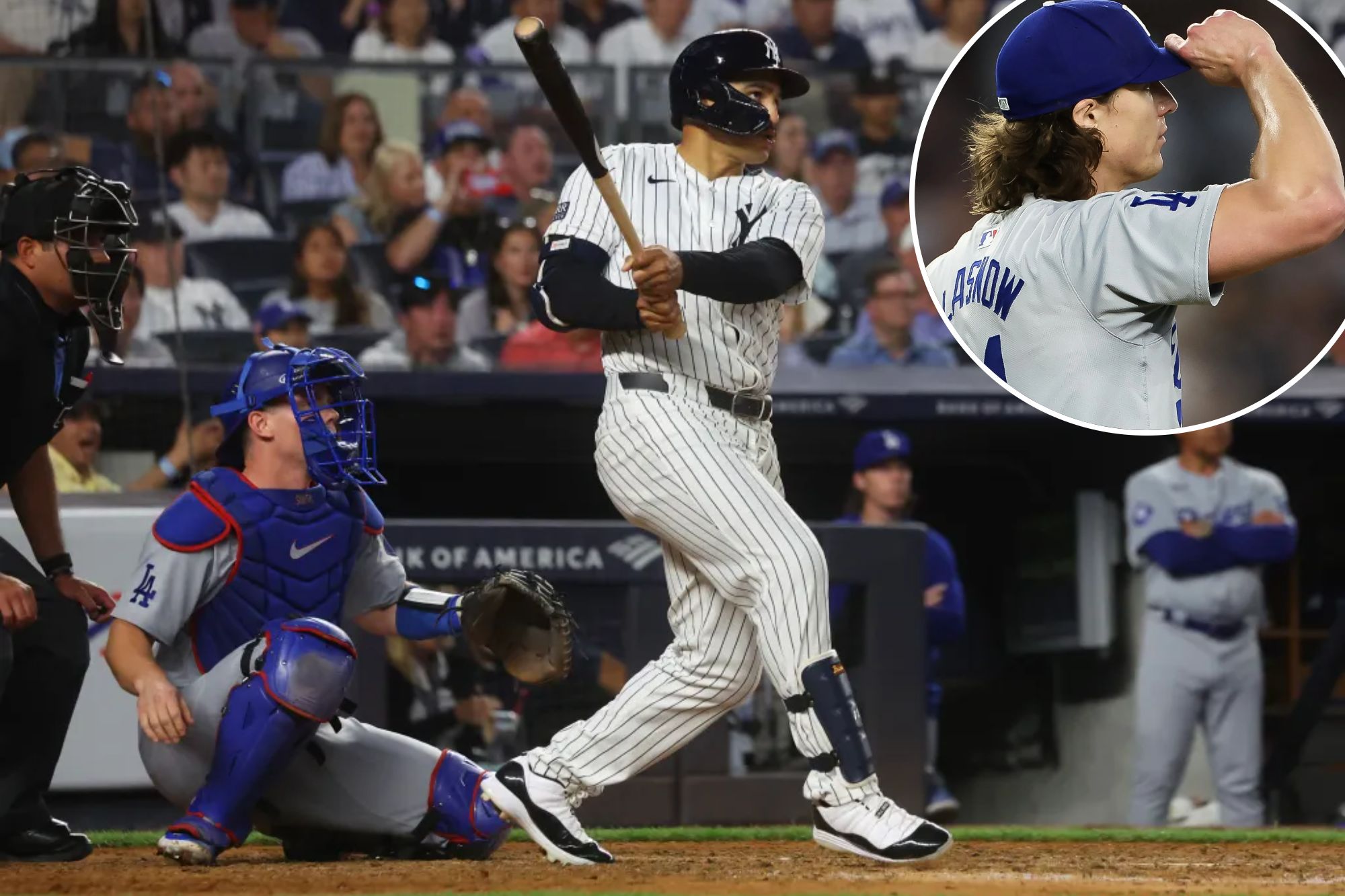
KANSAS CITY, Mo. — On Sunday, the Yankees used a pair of bombs to provide the bulk of the damage against the Dodgers’ Tyler Glasnow, who allowed a season-high-tying eight hits and five runs in six innings.
On Monday, the Yankees used a series of singles and sacrifices to wear down the Royals’ Seth Lugo, who let up four runs in seven innings and watched his ERA bump from 2.13 to 2.36.
It is not just that the Yankees, who clobbered the Royals 10-1 on Tuesday, have been showing a diversity of attack styles, but that they have been finding ways to successfully hang with some of the best pitchers in the game.
The Yankees entered play Tuesday with an .802 OPS against pitchers from teams that were at or above .500, which easily was the best in baseball (second place: the Orioles’ .782).
Have the Yankees finally built an offense that can perform against some of the league’s best pitching — the kind of pitching they figure to face in October?
“I hope so,” manager Aaron Boone said before Tuesday’s win at Kauffman Stadium. “Look, I think we’re a really good offense. I think we have a chance to be a really, really good and special offense.
“[But] we’ll see. It’s June. We got a long way to go.”
Boone is correct, but the early returns have been promising.
In the past few weeks, their lineup has performed against the likes of Logan Webb, Camilo Doval, Jordan Hicks, Dylan Cease, Bryce Miller and Luis Castillo.
The exceptions this season, though, have been notable: They lost series to the Orioles and Dodgers in part because they struggled to hit Corbin Burnes and Yoshinobu Yamamoto.
The numbers against the better staffs and better teams in baseball are worth monitoring because the Yankees hope they have been built differently than in years past, when their offense too often beat up on bad pitching but failed in the postseason.
Last year’s Yankees posted just a .693 OPS against the pitching staffs of average or better teams.
Injuries were a problem of course, but so was a lineup constructed of too many power, righty bats.
The addition of Juan Soto obviously has helped, but hitting coach James Rowson brought up the additions of Alex Verdugo and seldom-used Trent Grisham as capable lefties who have balanced the order.
“When you add these types of bats to your lineup, without a doubt your lineup gets better,” Rowson said. “But I think it’s also: You have to look at the synergy and the way this group kind of galvanizes together, and it’s something special to watch.
“We have the talent, but we also have the right chemistry in this clubhouse with these guys.”
Rowson was particularly proud of the way a small-ball lineup — without Aaron Judge, Giancarlo Stanton and Anthony Rizzo — got to Lugo on Monday, stitching together singles and sacrifice bunts to bother a pitcher who has emerged as one of the league’s best.
The Yankees have connected on the second-most home runs in baseball, but Rowson is seeing the group score in more ways than one.
“They’ve had the ability to not solely, in their approach, rely on the home run. They’re just relying on having a good approach consistently,” said Rowson, in his first year back at hitting coach. “And sometimes those actually end in us hitting home runs, but when they don’t … they’re looking to just create offense, create runs, and I think that’s a tribute to what happens overall offensively.”
The success against better pitching translated to a 17-10 record against teams above .500 entering Tuesday.
The last time the Yankees hit as well against these teams?
Their last championship season.
In 2009, they posted an .839 OPS against teams at or above .500.
“I think we have the makings of a really good offense, and that’s proven out so far,” Boone said. “But we got to keep doing it.”














